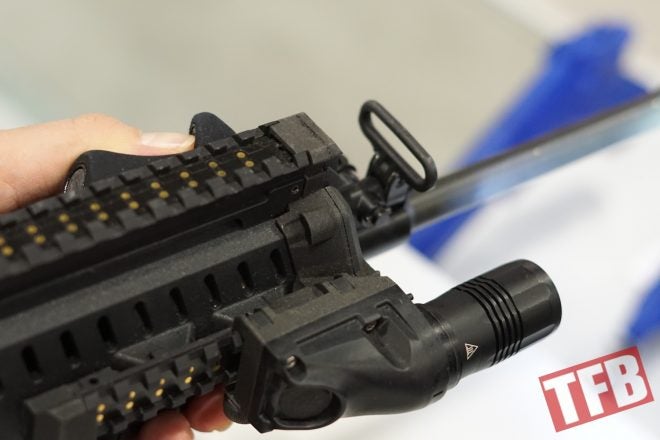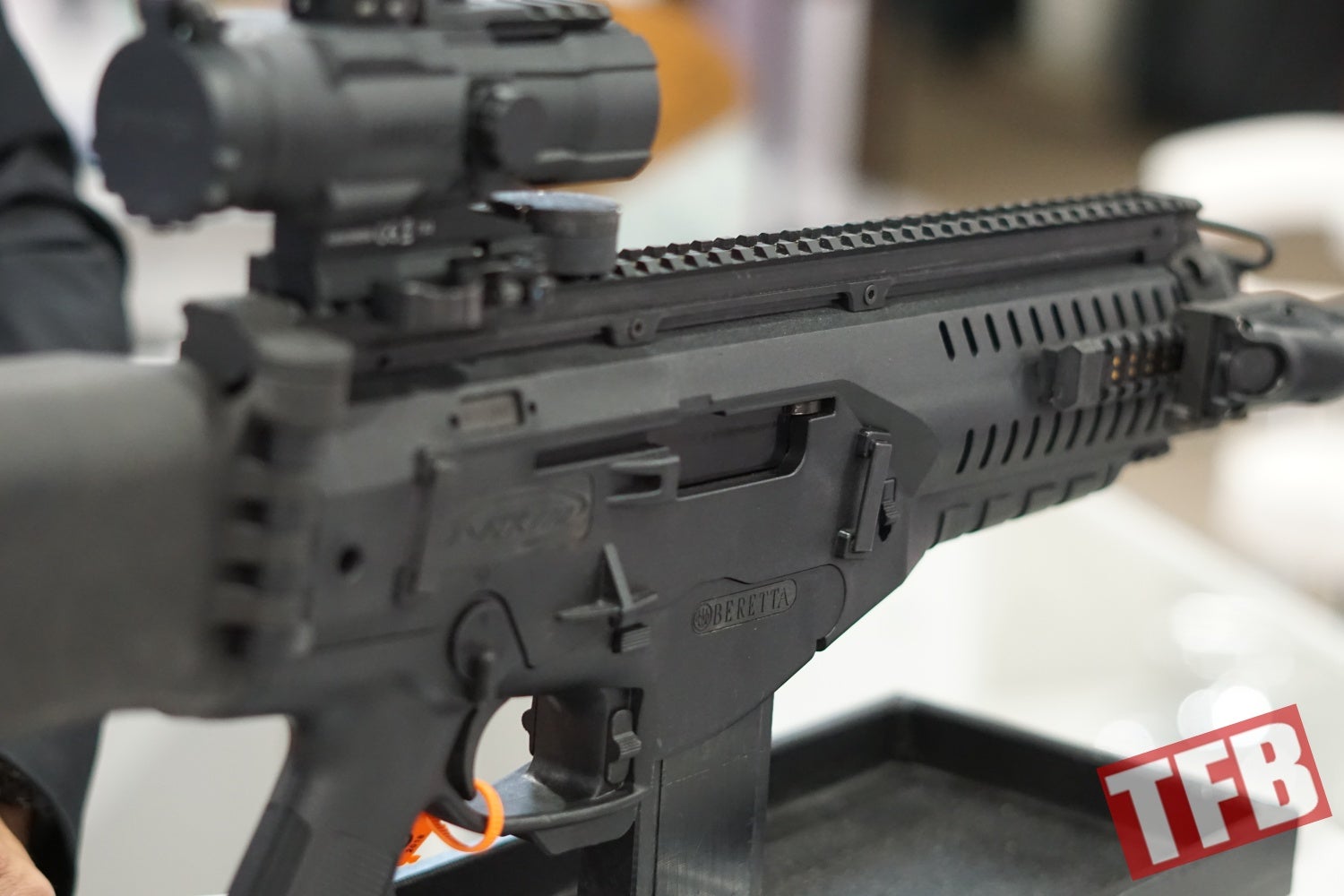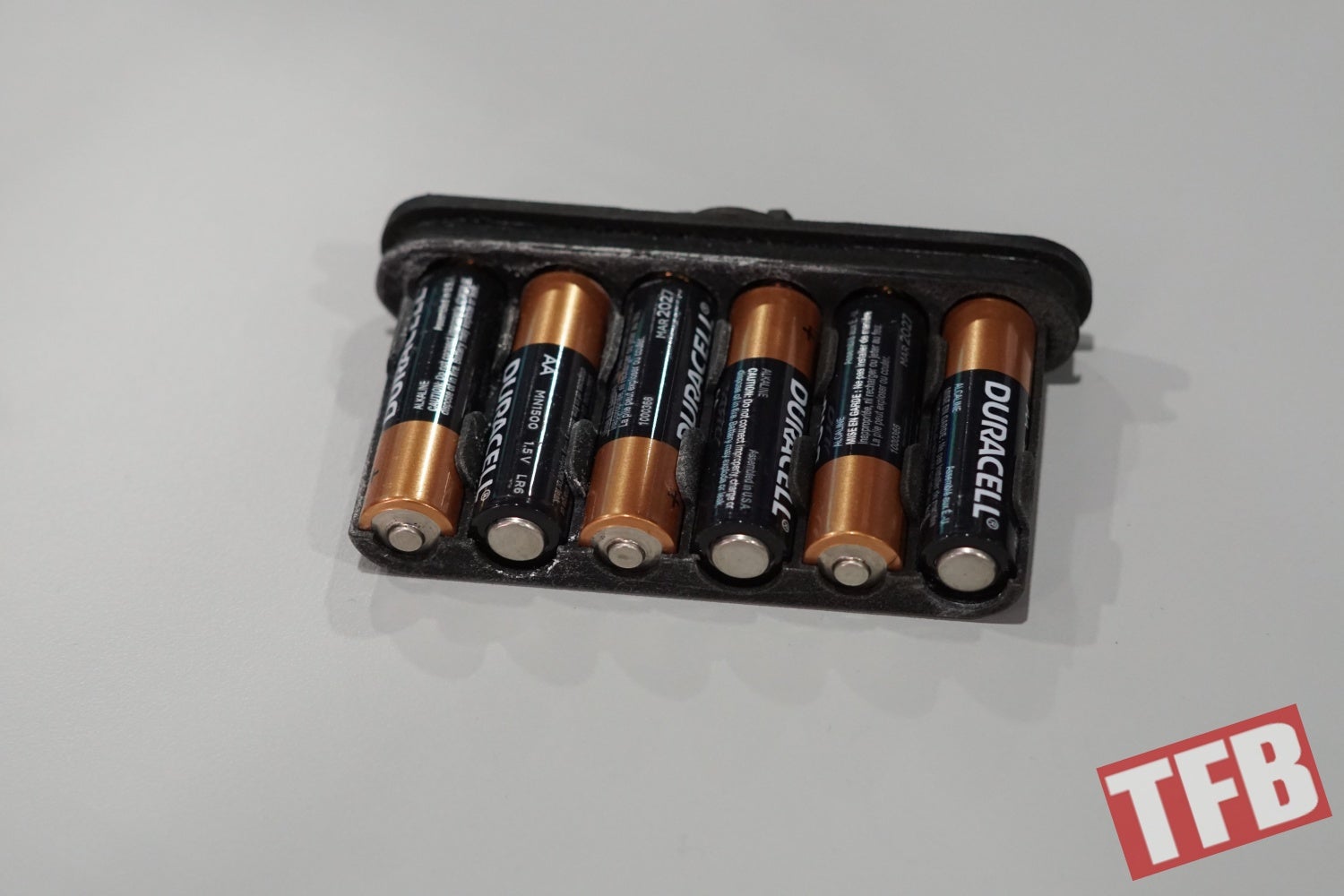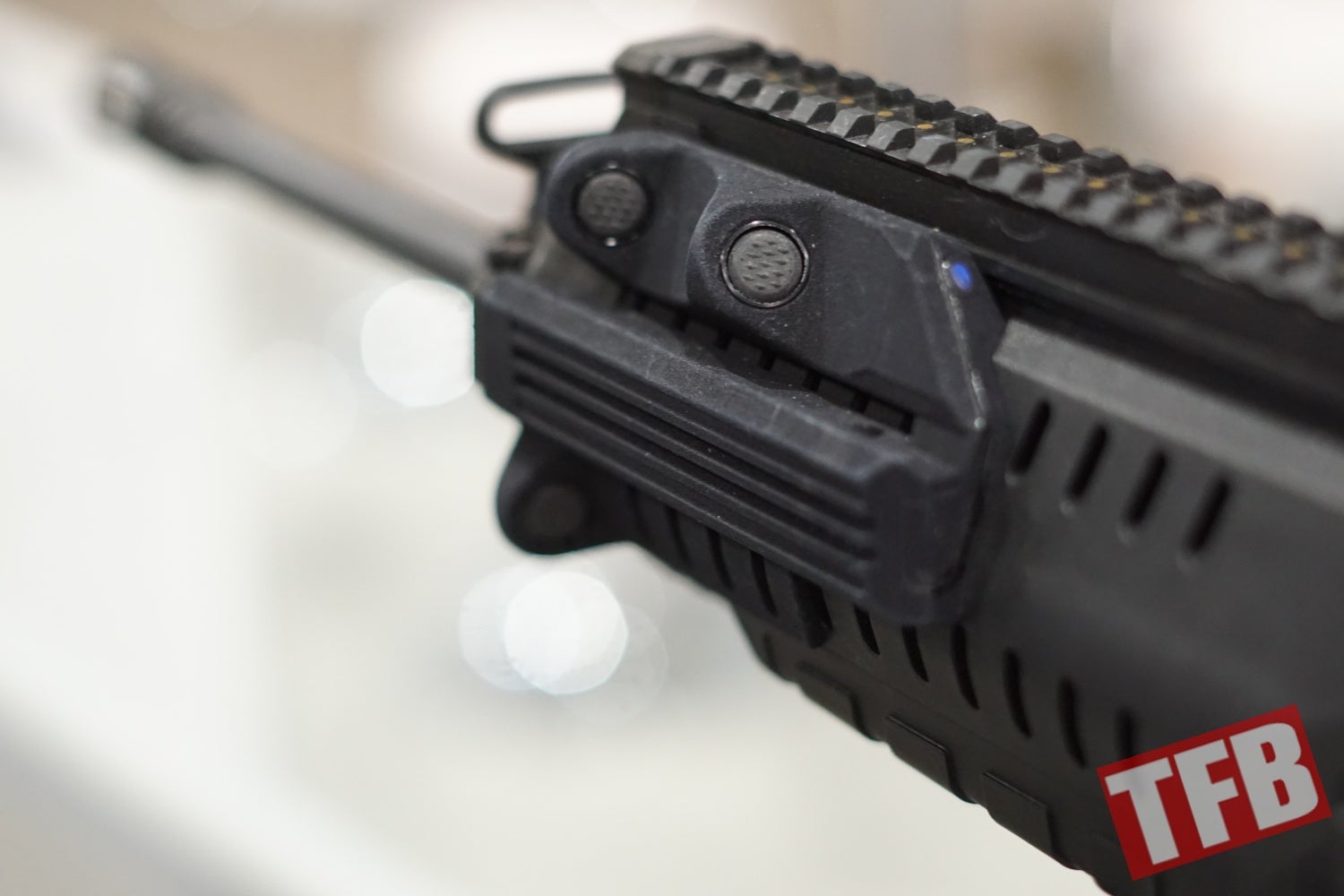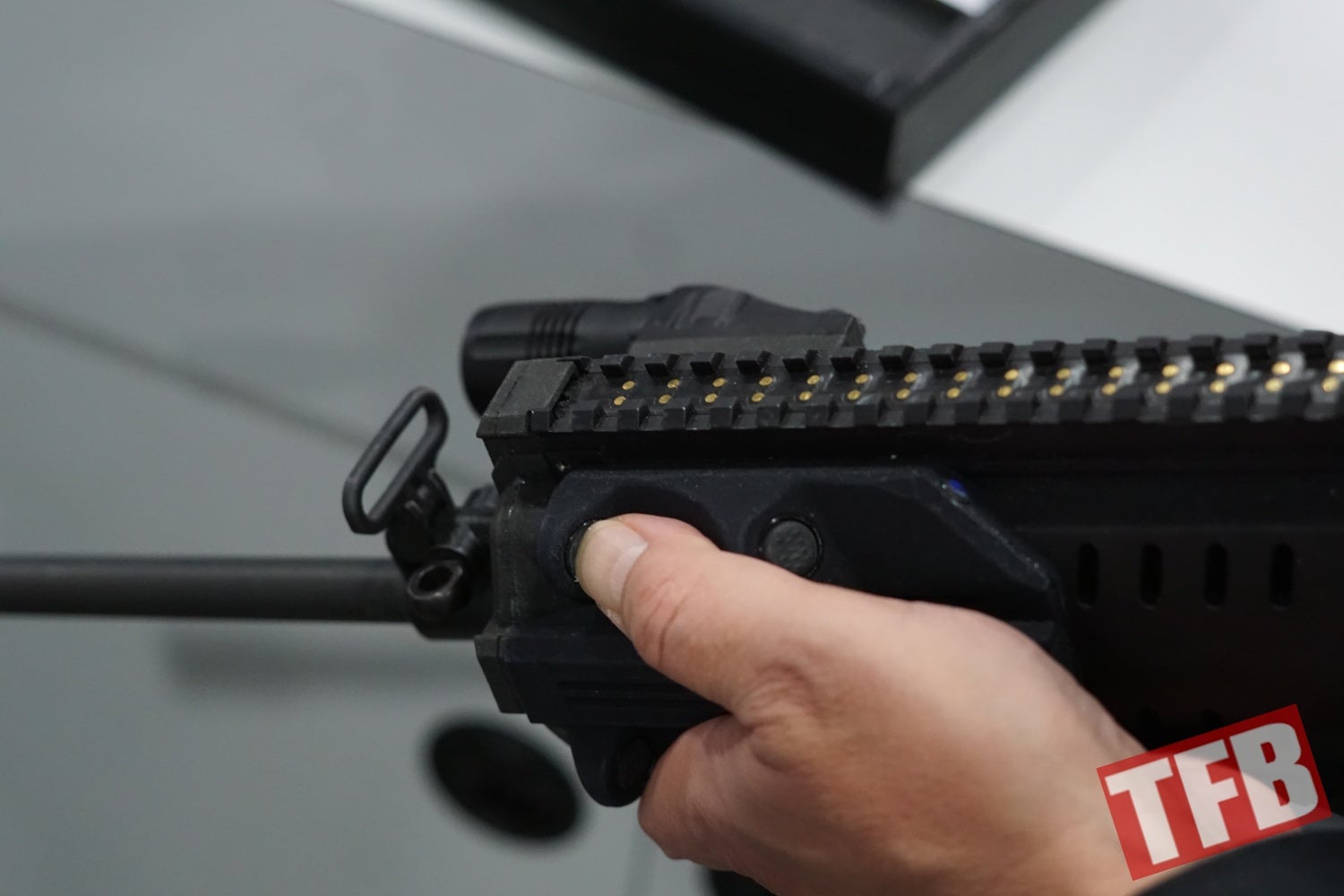Beretta’s Intelligent Rail emerged out of a previous U.S. Military solicitation for a “Powered Rail” on rifles and carbines several years ago. One specific contract was the Precision Sniper Rifle competition that SOCOM held, requiring competitors to submit a “Powered Rai” with their designs. The push for a powered rail within the U.S. Military appears to have stagnated, but the fruits of that competition appear to be popping up throughout the industry in the public, in this case with Beretta USA on the companies ARX160. Beretta didn’t work on the project alone however, it worked closely with TWorx Ventures, a developer of the Intelligent Rail for the AR platform, but in this case working with Beretta.
The idea of a powered rail is to have anything electronic on a rifle controlled and powered by a single battery pack. One of the concepts was that this would reduce weight and have a single source for battery logistics instead of carrying AAs for this light, 123s for that ATPIAL, or even CR 2032s for something else. Instead of reducing weight, it appears to have gained overall weight, and mass.
As we see on the Beretta entry, two points stand out. One that it has to be a wireless system and that it takes AA batteries. The wireless system was a requirement so that a soldier’s weapon system wasn’t compromised in an RF jamming environment. The 6 AA battery pack is probably due to a general movement within the U.S. Military procurement system to move away from Lithium 123s. One reason for this is practicality because 123s cannot be found in many parts of the world. But the other is because China just so happens to have the largest reserves of Lithium in the world. If the United States ever went into an actual war with China, or if China completely cut off its Lithium supplies, spare batteries would be in short supply.
Beretta’s system mounts the battery pack on the folding stock of the ARX160. This is connected to the Picatinny rail via the swiveling trunnion of the stock. The entire rail has connectors that electronic devices can be clamped to and then powered individually. On the left side of the rifle is a controller unit where a user has two buttons from which to choose which utility to operate. In this case there was only a light mounted to the rail but in reality, there would be an ATPIAL mounted as well.
It is a neat idea for sure. But I think the industry has a long way to go before we can get a powered rail that can actually run everything necessary to compete with a standard standalone setup, at a reasonable weight gain and power.
The rail can actually be seen in action in this video.
 Your Privacy Choices
Your Privacy Choices
